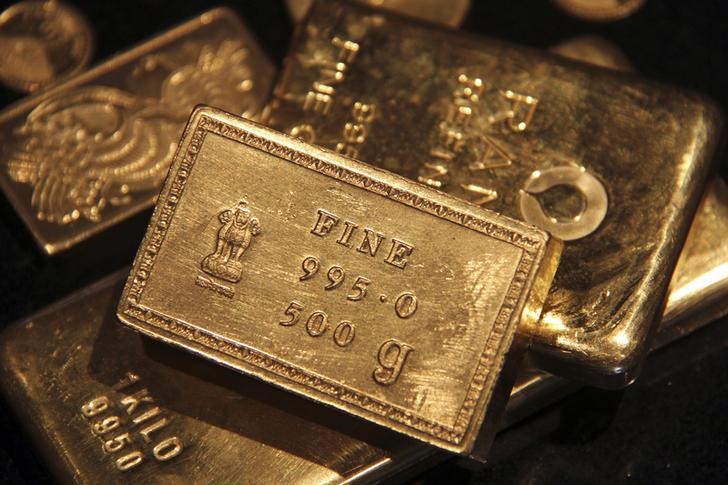By Barani Krishnan
Investing.com -- Gold bulls have caught a break from a two-day blitzkrieg that sent the yellow metal’s prices to 10-month lows.
The question is - will it last? And could now be the pivotal moment for a turnaround in the fortunes of those long on bullion?
The answer might have much to do with how the dollar performs going forth. The Dollar Index, which pits the U.S. currency against six other majors, stalled Thursday in this week’s dramatic rally that saw it rising to fresh 20-year highs.
Front-month gold futures for August on New York’s Comex settled Thursday’s up by a marginal $3.20 at $1,739.70. It had fallen almost $75, or 4%, over the past two sessions combined, reaching a 10-month low of $1,730.70 on Wednesday.
Gold’s malaise in large has been over market bets that the Federal Reserve will embark on one aggressive rate hike after another in its bid to tame inflation roaring at 40-year highs.
Fed officials have validated much of that thinking, with Governor Chris Waller saying on Thursday that the central bank had to “front-load” rate hikes — meaning raising them early and heavily, if necessary — if it was serious in getting inflation down.
Waller said fears of a U.S. recession were “overblown” — meaning the economy could take more rate hikes without collapsing — and that he was supportive of a 75 basis point hike in July.
Many economists say the Fed kept “rates too low for too long” and its catch-up now could unravel the recovery made since last year from the coronavirus pandemic, and possibly even push the United States into a recession.
The Fed left rates at between zero and 0.25% for two years during the pandemic and only raised them this year in March. It began with a hike of 25 basis points, or quarter-percentage point, then raised it by 50 basis points, or a half percentage point, in May. In June, it imposed an increase of 75 basis points, or three quarters of a percentage point — its highest in 28 years — bringing current rates to between 1.5% and 1.75%.
U.S. inflation itself has been persistently running at four-decade highs since late last year, with the closely-watched Consumer Price Index growing at an annualized rate of 8.6% as of May. The central bank’s target for inflation is a mere 2% a year and it has vowed to raise interest rates as much as necessary to achieve that.
The drone of recession talk has gotten louder across America since the Atlanta Fed forecast a 1.0% contraction in second quarter gross domestic product, or GDP. Officially, the Commerce Department reported a 1.6% GDP decline for the first quarter. Typically, an economy is considered to be in recession if there are two straight quarters of GDP decline.
A cluster of economic data of late has also suggested that the United States may be headed for an economic slowdown.
A closely-followed barometer of the U.S. services sector hit 20-month lows last month, data on Wednesday showed. The United States saw the highest number of job cuts in 16 months in June, a private sector employment tracker said in monthly data on Thursday that indicated the red-hot US labor market may be cooling. That came after the Labor Department reported a day earlier that job openings declined to 11.25 million in May from 11.68 million in April.
The Labor Department’s more important June non-farm payrolls report is due on Friday. Economists say some 268,000 payrolls were probably added last month — versus the 390,000 in May — holding the unemployment at 3.6% for a third straight month. A jobless rate of 4% or below is seen by the Fed as full employment. The central bank is keeping a close watch on all labor data to gauge how much tolerance the job market will have toward higher interest rates.
